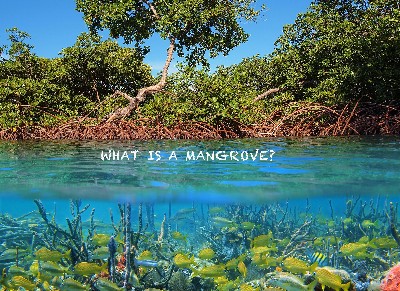What is a Mangrove?

A mangrove is a tree or shrub; they grow tropical coast swamp areas that flood at high tide. About 50 types of mangroves grow in 123 countries, Panama being one.
There are three common types of mangrove found in Panama: the Red mangrove, black mangrove and white mangrove. All three species can be found along the Caribbean and Pacific coasts.
The tangled root systems of the mangroves provide shelter for an array of species including reptiles, fish, shellfish, amphibians, mammals and birds. As leaves from the trees fall and decompose they offer these animals nutrition.
Human populations benefit from the mangrove system as well, using the trees for charcoal, firewood and the fish that live amongst them for food. Finally, mangroves are an important form costal protection, reducing inland flooding during heavy storms, protecting beaches and reefs from disappearing. The root system also helps with water filtration; reducing pollution and absorbing dissolved nutrients.
The 2015 WWF Living Blue Planet Report concludes that mangroves are in decline. “Worldwide, nearly 20 per cent of mangrove cover was lost between 1980 (18,794,000 hectares) and 2005 (15,231,000 hectares) this equal to nearly 3.6 million hectares. The primary cause of this loss was the conversion of mangrove areas to different uses such as aquaculture, agriculture, infrastructure and tourism, as a result of increasingly high human population pressure in coastal areas.”
Trending Tags
